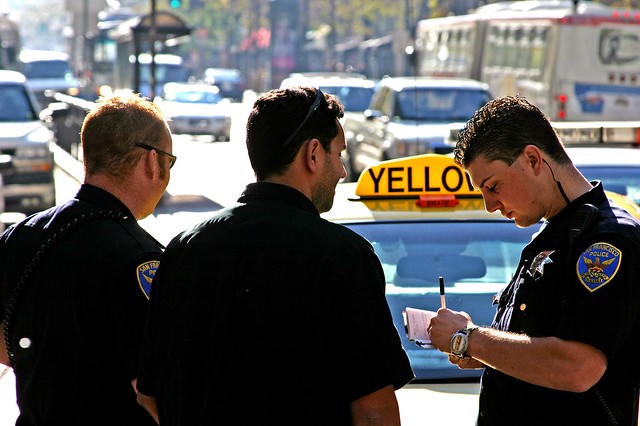Tracking, analyzing, and reporting pedestrian fatalities should be a basic function of the San Francisco Police Department. But the fact is that SF lacks public access to clear and accurate data about street safety. The information gap is deeply troubling, and city agencies must act quickly to rectify it.
In April, Streetsblog reported a discrepancy in the number of 2011 pedestrian fatalities reported by the SFPD. A department spokesperson had told Streetsblog the total was 13, but another officer who reviewed the data said it was actually 17. The spokesperson, Albie Esparza, said the initial undercount came from the SFPD's hit-and-run unit, while the higher, more accurate number, provided by officer Linda Chen, apparently came from a more comprehensive list.
When asked about discrepancy, Esparza said the other four fatalities must have been bicyclists, not pedestrians. But when we checked that with Chen, she confirmed her numbers: 17 pedestrians killed, three bicyclists, and eight car drivers or passengers, for a total of 28 people killed in traffic crashes in 2011.
Asked about the possible cause for the error, Al Casciato, the retiring head of the SFPD's Traffic Company, said the hit-and-run unit's data may not always be up to date. Certain cases, he explained, like a pedestrian killed by a Muni train, or a victim who dies from his or her injuries months after a crash, may not be added to the unit's report for some time.
Overall, the state of public data on street safety in SF is poor, and as a result, it can be exceedingly difficult just to ascertain, for example, whether traffic injuries are rising or falling. In New York City, annual reports on the volume of traffic injuries and deaths are compiled by the state Department of Motor Vehicles, and a recent law compelled the police department to release monthly updates on traffic violence. The system isn't perfect -- NYPD has so far managed to avoid releasing their data in an open format -- but in SF, no such report is available until several years later.
"It's been frustrating," said Elizabeth Stampe, executive director of Walk SF. "Any time I've tried to find out how many people have been injured or killed on the city's streets, the police have been quite responsive and willing to talk, but they simply have no system in place for collecting this fundamental information."
City staff and pedestrian advocates say the larger task of tracking pedestrian injuries is bogged down by a complicated system of data collection involving the SFPD, SFMTA, Department of Public Health, and the state government. SFPD budget cuts in recent years have also cut the staff needed to stay on top of the data.
Staff and funding shortages have also stymied recent efforts to improve the system, though reforms seem to be gaining some traction. The SFPD's targeted pedestrian safety enforcement plan, announced jointly with Walk SF in March, promised a data-sharing agreement to be signed "soon" between the various departments. The agreement, the statement said, would involve transitioning from handwritten reports to an electronic system for more efficient data sharing (Streetsblog will be following up on these efforts).
Keeping a reliable record of basic information like pedestrian fatalities -- and accurately conveying that information to the public -- is not only crucial to gauging the city's progress (or lack thereof) toward making streets safer. It's also a matter of valuing human lives that shouldn't be trivialized.
"I think it's shocking that right now, the police department doesn't know how many people have been killed on the streets," said Stampe. "They really need to have the infrastructure to track this basic information. How can we improve our streets if we don't even know where we are now?"





